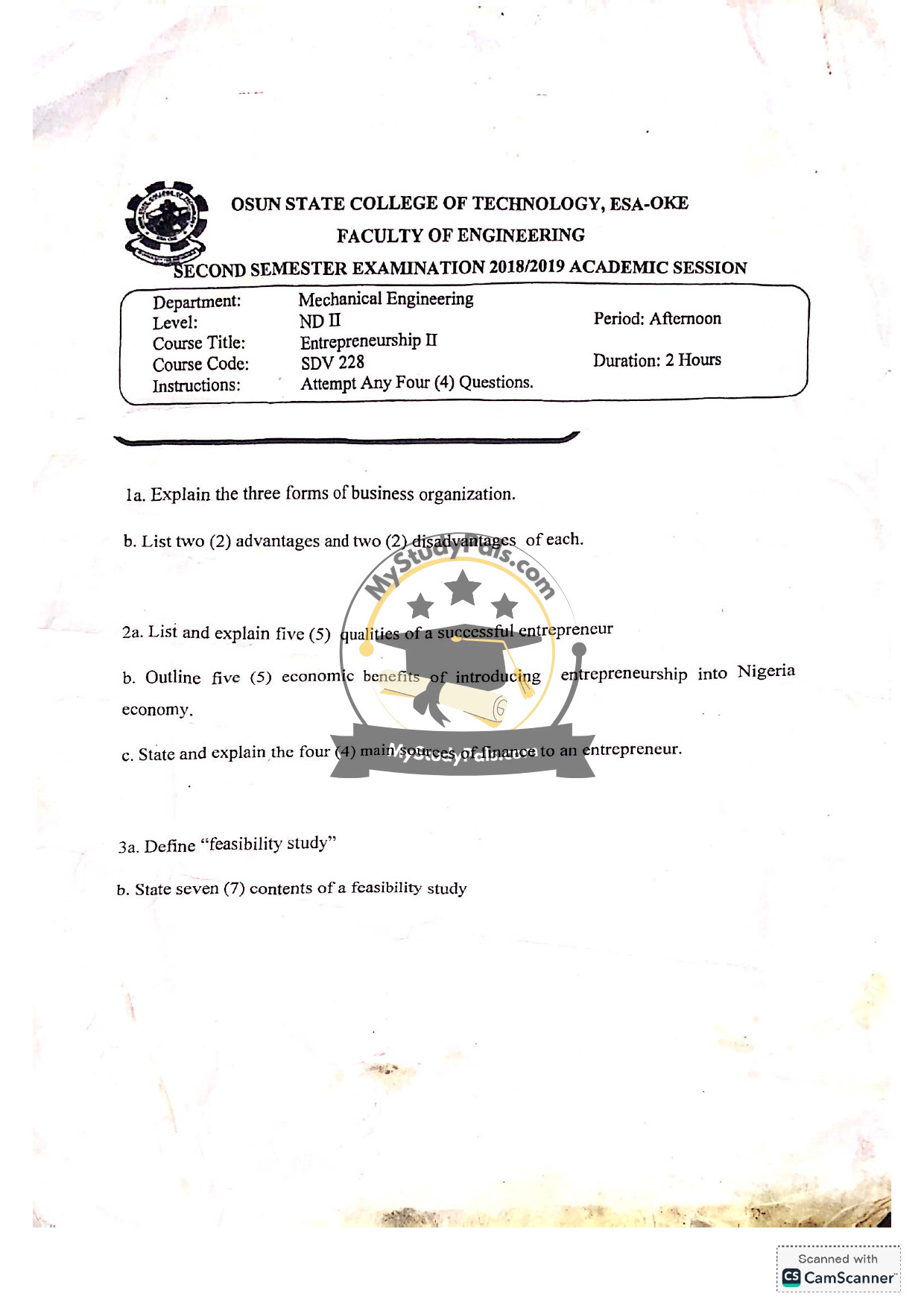ANWSER
Question 1a:
The three forms of business organization are:
1. Sole Proprietorship: Owned and managed by a single individual.
2. Partnership: A business owned by two or more individuals who share profits and responsibilities.
3. Corporation: A legal entity separate from its owners, with shareholders and a board of directors.
Question 1b:
Sole Proprietorship
– *Advantages*: Easy to establish; Full control by the owner.
– *Disadvantages*: Unlimited personal liability; Limited access to capital.
Partnership
– *Advantages*: Shared workload and resources; Greater financial capacity.
– *Disadvantages*: Potential conflicts between partners; Joint liability for debts.
Corporation
– *Advantages*: Limited liability for shareholders; Perpetual existence.
– *Disadvantages*: Complex regulatory requirements; Double taxation (corporate and dividend taxes).
—
Question 2a:
Five qualities of a successful entrepreneur:
1. Creativity: Ability to innovate and develop unique solutions.
2. Risk-taking: Willingness to pursue opportunities despite uncertainties.
3. Leadership: Capacity to inspire and manage teams effectively.
4. Resilience: Persistence in overcoming challenges and setbacks.
5. Adaptability: Flexibility to adjust strategies in changing markets.
Question 2b:
Economic benefits of introducing entrepreneurship into Nigeria’s economy:
1. Job creation, reducing unemployment.
2. Stimulates economic growth through GDP contributions.
3. Encourages innovation and technological advancement.
4. Diversifies the economy, reducing reliance on oil.
5. Enhances exports, improving the balance of trade.
Question 2c:
Four main sources of finance for entrepreneurs:
1. Personal Savings: Funds from the entrepreneur’s own resources.
2. Bank Loans: Borrowed capital from financial institutions.
3. Venture Capital: Investment from firms in exchange for equity.
4. Government Grants: Non-repayable funds provided by public institutions.
—
Question 3a:
Feasibility Study: A detailed analysis conducted to determine the practicality and potential success of a proposed project or business.
Question 3b:
Seven contents of a feasibility study:
1. Executive Summary
2. Market Analysis (demand, competition, target audience)
3. Technical Requirements (resources, technology, infrastructure)
4. Financial Plan (costs, funding sources, revenue projections)
5. Organizational Structure (management roles and responsibilities)
6. Risk Assessment (potential challenges and mitigation strategies)
7. Conclusion and Recommendations (final viability judgment).
—


